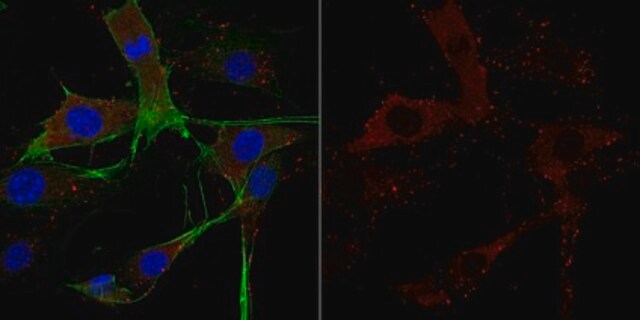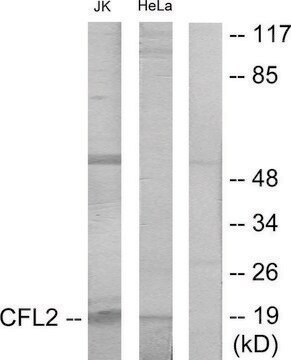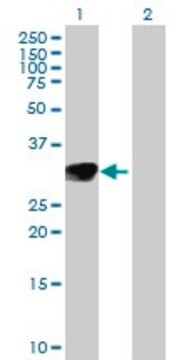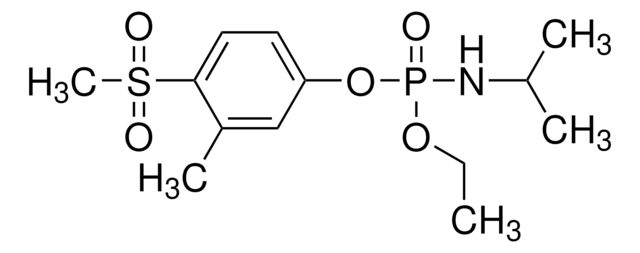C8736
Anti-Cofilin antibody produced in rabbit
IgG fraction of antiserum, buffered aqueous solution
Synonyme(s) :
Anti-CFL, Anti-HEL-S-15, Anti-cofilin
About This Item
Produits recommandés
Source biologique
rabbit
Conjugué
unconjugated
Forme d'anticorps
IgG fraction of antiserum
Type de produit anticorps
primary antibodies
Clone
polyclonal
Forme
buffered aqueous solution
Poids mol.
antigen ~19 kDa
Espèces réactives
canine, rat, human, mouse
Technique(s)
indirect immunofluorescence: 1:1,000 using using mouse NIH/3T3 fibroblasts
microarray: suitable
western blot: 1:10,000 using using whole extracts of human A-431, rat PC-12, mouse NIH/3T3, and dog MDCK kidney cells
Numéro d'accès UniProt
Conditions d'expédition
dry ice
Température de stockage
−20°C
Modification post-traductionnelle de la cible
unmodified
Informations sur le gène
human ... CFL1(1072) , CFL2(1073)
mouse ... Cfl1(12631) , Cfl2(12632)
rat ... Cfl1(29271) , Cfl2(366624)
Description générale
Spécificité
Immunogène
Application
- for immunostaining of chick neurons. It is used as a primary antibody
- for western blotting of protein isolated from mouse hippocampi cells, rat brain samples, human acute lymphoblastic T-cell line, human brain samples, head and neck squamous cell carcinoma cell line, HEK293T cells and renal epithelial cell lines
- for immunofluorescence studies in tissue samples from human brain
Actions biochimiques/physiologiques
Forme physique
Stockage et stabilité
Clause de non-responsabilité
Not finding the right product?
Try our Outil de sélection de produits.
En option
Produit(s) apparenté(s)
Code de la classe de stockage
10 - Combustible liquids
Classe de danger pour l'eau (WGK)
WGK 1
Point d'éclair (°F)
Not applicable
Point d'éclair (°C)
Not applicable
Certificats d'analyse (COA)
Recherchez un Certificats d'analyse (COA) en saisissant le numéro de lot du produit. Les numéros de lot figurent sur l'étiquette du produit après les mots "Lot" ou "Batch".
Déjà en possession de ce produit ?
Retrouvez la documentation relative aux produits que vous avez récemment achetés dans la Bibliothèque de documents.
Notre équipe de scientifiques dispose d'une expérience dans tous les secteurs de la recherche, notamment en sciences de la vie, science des matériaux, synthèse chimique, chromatographie, analyse et dans de nombreux autres domaines..
Contacter notre Service technique








